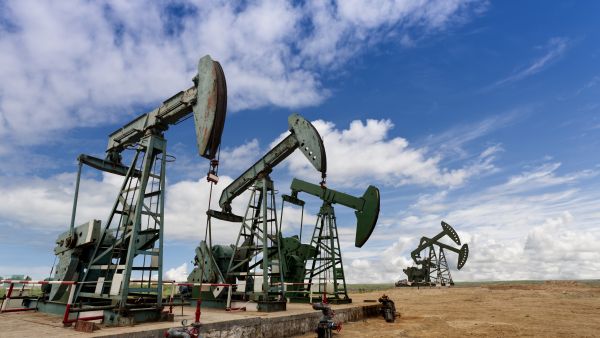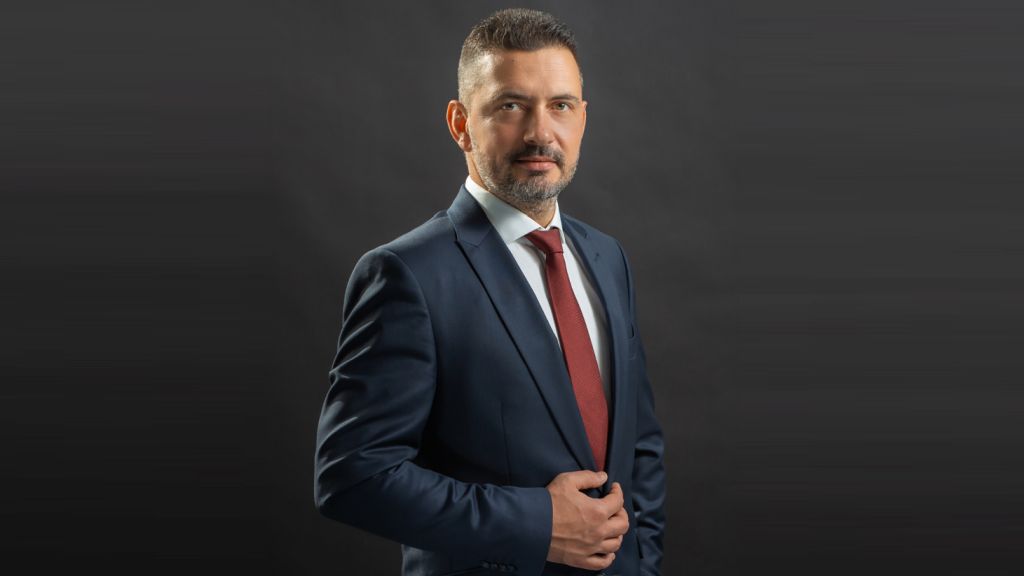Q: You’ve recently signed a geological data exchange agreement with Chevron, in the view of finding potential shale gas resources in Romania. How will this partnership work?
Bogdan Popescu: We operate a concession in Suceava area, while Chevron focuses on an adjacent area in Barlad. Some older drillings revealed the possibility that shale gas could be found in the Suceava area as well. We want to check on that, but we don’t carry any shale gas explorations in Suceava. We are a small company and such an exploration is extremely expensive. We produce conventional gas there.
We are signing a data exchange agreement with Chevron. Our people will get involved into a study group. Our geoscientists will work with their counterparts, to help Chevron drawing some conclusions about their concession and also to help us understand if we have an added value in our concession. So far, the agreement is in the hands of Chevron’s lawyers and we are waiting for their feedback.
I’ve been doing myself together with another colleague some evaluations regarding shale gas during the last one and a half years. The result is that, apparently, Romania has such resources for some 60 years of production only from the Paleozoic play. But we don’t know for sure these resources exist and the information we have is based on past drillings made with other purposes than identifying shale gas deposits.
Q: How dangerous is it to extract shale gas and what’s its legal status in Romania?
Bogdan Popescu: We hear so many indictments that are not true. One of them is that the extraction of shale gas pollutes the groundwater. No oil activity has polluted the groundwater so far unless there was an accident, let alone shale gas extraction. It is a myth.
A second allegation is that the horizontal drillings cause earthquakes. It is true, but these earthquakes have a degree of 1 or 2 on the Richter scale. It is as if I jumped off a table. They are less intensive than the explosions at quarries, or heavy traffic on a macadam road which we accept.
The shale gas drillings are safe. There hasn’t been any accident so far reported in the US, which drilled more than 50,000 wells in unconventional plays during the last 20 years.
In Romania, theoretically, we are allowed to explore and exploit it. The oil law doesn’t mention the type of oil gas or condensate we can exploit. There were huge protests against shale gas exploration in the Barlad area. Chevron has obtained licenses to explore several permits at the end of 2011, but the process was delayed because of these protests. They’ve been waiting ever since.
Now they’ve been allowed to do seismic tests in Dobrogea, which is a non-invasive procedure of listening to the earth. It produces small earthquakes that are captured by electrodes, which help us see the structure of the earth. There is a big scandal about it and activists are complaining these tests are destroying beaches and polluting the groundwater, which obviously is nonsense.
The current government seems to understand better what the exploration is about. This was not the case of the previous government, which delayed beyond limits the ratification of concessions and environmental permits. However, there are still a couple of concessions that are waiting for the ratification from the government in place.
If the geophysical field work in Doborgea shows there are certain structures there that can be drilled, Chevron will start drilling permitting procedures. A company we bought, Regal Petroleum, had already made similar geophysical tests in the Barlad area and, based on that, Chevron decided there are two locations where wells could be drilled to check on the existence of shale gas potential.
In spite of all the scandals, Romania doesn’t know so far if it has such resources. It could be possible that Chevron invests up to EUR 300mn to fulfill the committed exploration and then leaves. Romania has proven that it has shale formations, but we don’t know if they have commercial gas in them, because they’ve never been tested and drilled for that purpose. If we find commercial gas in them, we could keep prices low.
Q: Last year you raised USD 8.35mn at the Sydney stock exchange, to develop your oil and gas perimeters at Jimbolia and Bobocu. How much of this money have you invested so far and what’s the current status of these concessions?
Bogdan Popescu: We have three concessions in Romania, in partnership or fully owned. The Bobocu field, in Buzau county, belongs 100% to Zeta; the Suceava concession is 50%-50% owned with Raffles Energy; and the Jimbolia field, in the Timis county, is 39% owned by Zeta, 51% by Gazprom Neft and 10% by Armax Gaz.
Last year we drilled a well in the Bobocu field at 2,600 meters. The well was located in the central part of the field, where we interpreted there is a number of lobes that would bear gas. This field was abandoned 15-20 years ago by Romgaz because of some sanding problems, but the gas is still there. We found that our well was water bearing in the lower reservoir lobes. We stopped testing the lower intervals and asked the national resource agency ANRM for permission to suspend the well and drill a side track because we have another objective about 700 meters south.
We haven’t found any gas so far because our well was some five meters lower on the structure . We entered into the water part of the lower reservoirs and that’s why we would like to sidetrack it and, afterwards, to test the upper interval.
The well is currently suspended. We expect to start works in Q3 this year. We’ve invested over EUR 3.5mn in this well, in drilling and all the connecting services. So far we’ve had no results, but that’s the risk in the oil industry.
Meantime, we’ve associated with NIS Naftagas from Serbia, the state-owned company that was bought by Gazprom. They are the operator and they have an obligation to drill a well in the Jimbolia field. They did it and now they are working on securing a contractor for testing. The first perforations didn’t deliver the expected oil, so reservoir should be acidized. This is another kind of stimulation, like fracking is.
We would like to invest the rest of the money in continuing the drilling in Suceava, where our partner Raffles Energy is the operator. We want to put one or two wells here in G2P (gas to power). This means we have to talk to people that have engines using gas to produce electricity. We can produce 3MW to 5MW, if we consider our reserves, but that is not advisable because obtaining permits takes a long time. So the best is to produce only 1 MW, which is restricting our cash flow, but it produces 10 to 15 years of electricity. We’ve already started to look for suppliers.
The other part of the money we will invest in building the sidetrack at Bobocu, which shall costs around EUR 1mn.
Q: Do you plan to raise additional money, to support your projects in Romania and in the region?
Bogdan Popescu: Yes, we do. We are actively looking for opportunities and for partners in Romania, Ukraine and Bulgaria, to form new ventures. We are looking for companies that have underdeveloped discoveries, similar to what we have at Dornesti, in Suceava county. We could develop them. We are also interested to work on existing brownfields, to redevelop them.
We are not thinking seriously at pure exploration, like Chevron. We eye opportunities between USD 10mn and USD 60mn to invest ourselves, in partnership with the local companies. We were lastly looking at six proposals in Ukraine, one in Bulgaria, and also in Turkey.
We are happy with our discovery in the Suceava area. It is a small, yet quietly producing field. It is also predictably depleting. That’s the reason we want to drill other two wells in the coming period in the same concession.
We also want to develop Bobocu, which is our jewel of the crown. That’s going to be another game because, if finding oil costs tens of millions of dollars, developing it is much more expensive. First Zeta plans to test that our geological model is valid. If we prove our concept at Bobocu right, we’ll think about full scale drilling there.
The development of the field would last three to five years.
If everything goes fine, in one year we’ll have some additional income from energy production. We’ll hopefully have Jimbolia tested and we’ll have to think of a development plan, to produce the 1.5 to 4 million barrels of oil existing there.
Suceava would require some EUR 3mn investment per year. This depends on our partner, because we are not operators. In Jimbolia, each well will be in the range of USD 4mn and we have to drill at least five wells, if not eight. In Bobocu, we could drill a dozen of wells.
Overall, the total investment would be in the range of tens of millions of dollars. We should invest all this money ourselves or we could work in partnership with another company, to farm-in, farm-out. We could offer a stake to another oil or investment company that could initially invest between USD 20mn and USD 30mn. It would be a joint venture per project, where we could own the majority or the minority stake. I would prefer joining forces with a medium size company. This could happen fast.
Q: Have you considered raising this money on the Bucharest Stock Exchange?
Bogdan Popescu: Apparently there is no way we could do that because Romanians are not investing in these things. That was the analysis of the brokers we’ve worked with. They advised us against coming to Bucharest, because there is no oil company floating here, except for a small stake in Petrom and, possibly, Romgaz.
Most of the brokers advised us to go to Warsaw instead, which is a more fluid market and people are more interested in investing in stocks. The Romanian stock exchange is very small. If you look at the daily figures, they are ridiculously low.
Q: Are you interested in taking over other concessions?
Bogdan Popescu: We have plans to take more concessions. We are waiting for the ANRM to open the bidding rounds. They have around 30 fields returned by Romgaz and Petrom. Strategically, we would like to have a geographical coherence. We would be interested in areas located around Bucharest, close to Bobocu, or in the westernmost part of the country, where Jimbolia is, in the so called Pannonian Basin.
However, we have an opportunistic approach. If a field is good is south eastern Oltenia, we’ll go there.
We’ve been investing between EUR 2mn and EUR 5mn per year in Romania since 2006. We’ve put a lot of money here, with no profits so far. The production in Suceava is not offsetting our investments. We need more production of gas and/or electricity.
Q: An ANRE report shows that, by 2030, Romania’s oil and gas resources will disappear. What is it, in your view, the ideal energy mix for Romania?
Bogdan Popescu: That would be a tricky estimation. Now we have big hopes with the deep Black Sea resources because Domino, the deepwater exploration well owned by Petrom and ExxonMobil, is going to deliver between 40bn to 80bn cubic meters of gas. Rumors in the market are that the discovery is going to be actually much bigger, so they would drill a second well to confirm the first one and they could come with bigger reserves.
Our evaluation of unconventional gas from the paleozoic is that we have resources of about 1 trillion cubic meters of gas, which would be enough for the next 60 years. This, disputed, shale gas could thus make a difference in Romania :if we find it and is economically viable to produce!
Romania’s energy mix should be based on hydrocarbons and renewables. But renewables proved to be very counterproductive. Countries that have eagerly accepted them, like Germany, pay an energy price three times higher than the US. Ten years after promoting and producing green energy, Germany still haven’t managed to cover more than 10% of their consumption based on such resources. As a result, Germany is transferring part of its industry to the US, where energy is less expensive, and is importing the highly polluting coal from this country that now has more than enough of it.
Renewables have a major problem, except maybe from hydro: they are not a continuous source of energy. It is occasional and expensive, while energy consumers like it to be continuous, abundant and cheap. Around 20% of European consumers’ bills count for the green certificates given to producers of renewable energy.
Until proven otherwise, hydrocarbons and coal remain the cheapest source of energy and generate the ideal mix for Romania together with the nuclear and hydropower. It is normal that the fossil fuel energy gets more expensive, because it is a non-renewable source that’s about to finish. The planet has reached the so called peak oil point for conventional hydrocarbons a while ago. This means it reached its maximum petroleum extraction rate, after which the rate of production is declining. This syndrome has been pointed out in the ‘50s, when King Hubbert, a geologist working for Shell, said that the US will reach its peak conventional production in ’75-’76. And it did.
That’s why our bills for gas and electricity are more expensive, because they are based on depleting and more and more difficult to find conventional hydrocarbons.
When the cheap hydrocarbons vanish, towards the end of the century, I think mankind will find another cheap energy source. For the moment, we still can count on unconventional hydrocarbons, such as shale gas in US, the Athabasca oil sands, Venezuela’s Faja d’Oro or those that need to be extracted from deep waters. In Romania we have such unconventional oil at Suplacu de Bacau, which supplies around 10% of the country’s needs.
I think 90% of Romania’s energy production should be based on nuclear, hydrocarbons and coal resources, and the rest to be made of hydro, wind, photovoltaic and biogas.
Q: What would be your advice towards authorities?
Bogdan Popescu:I would advise them to protect the large corporations, which have more draconic corporate governance rules than the states themselves. Companies such as Shell, Chevron or Exxon cannot afford to make mistakes. We should wonder why only few of these large companies have come to Romania. In the oil segment, Shell, Amoco and Enterprise Oil had operations in Romania in the ‘90s. They left after drilling some dry wells. Shell withdrew even its distribution division from the market, but it is still present in Ukraine and Bulgaria.
I think there is some annoyance in the relation between large corporations and Romanian politicians. These companies can take quick decisions when necessary and go where rewards are higher and faster to reap. Let’s take the example of Poland, where Exxon and Marathon decided to exit the market after only three or four years of exploring shale gas. Only Chevron remained.
My second proposal would be maintain the focus on nuclear energy, which is one of the cleanest sources, and to diversity the type of companies that are exploring oil and gas fields in Romania. I would support smaller companies that extract some oil from old fields, and would support Petrom as well, by not increasing its royalties up to the sky and thus killing marginally profitable exploration or production projects. For example, in Petrom’s Black Sea project, one single drilling costs over USD 100mn.
I would also support the companies which play the shale gas roulette, like Chevron.






























